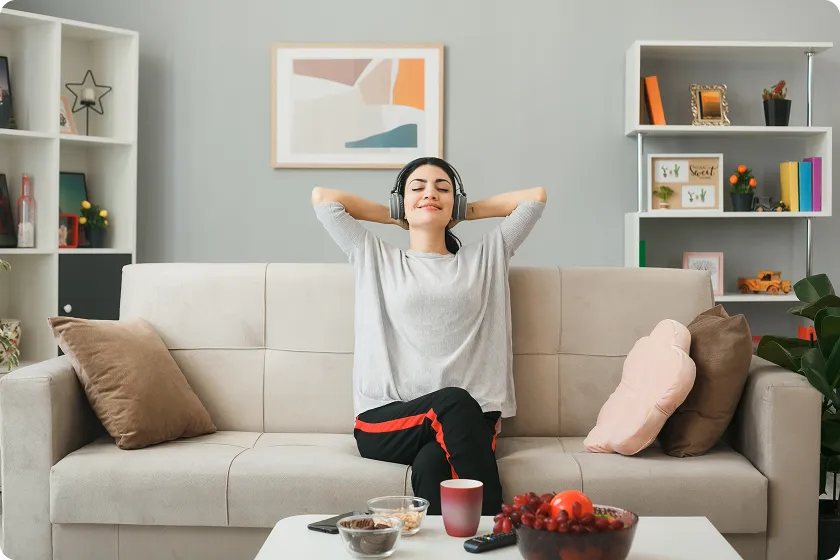Table of Contents
- Introduction: Why Air Purifiers for Allergies Matter
- Start With Household Air Quality Testing
- How to Select the Most Effective Air Purifier for Allergies
- Smart Air Monitoring Devices and Real-Time Insights
- Natural Ways to Clean Indoor Air: Plants and Biophilic Design
- The Science of Air Filtration and Respiratory Health
- Improve Home Ventilation for Long-Term Freshness
- Control Humidity Levels to Prevent Mold and Dust Mites
- Maintain a Cleaning Routine that Supports Air Purity
- Upgrade to Eco-Friendly Building Materials and Furnishings
- FAQ: Common Questions about Air Purifiers and Allergies
- Conclusion: Take Control of Your Indoor Air
Introduction: Why Air Purifiers for Allergies Matter
If springtime sneezing, itchy eyes, or constant congestion sound familiar, your indoor air could be the culprit. Research indicates that indoor air is often two to five times more polluted than outdoor air, even in urban areas. Dust, mold spores, smoke, and pet dander circulate invisibly through our homes, aggravating allergies and asthma.

An effective air purifier for allergies removes those particles before they reach your lungs, creating a safer, more comfortable living space. When combined with home indoor air quality testing and a few smart habits, you can dramatically improve your family’s well-being. In this guide, you’ll learn nine proven ways to clean your indoor air — from testing and choosing the right purifier to adding natural purifiers and monitoring systems that help you breathe easier year-round.
1. Start With Household Air Quality Testing
Before purchasing an air purifier, find out what’s floating in your air. Household air quality testing helps identify dust, pollen, mold, and chemical irritants so you can target them effectively.

Testing also shows whether issues like humidity, poor ventilation, or VOCs are contributing to symptoms such as headaches, coughing, or fatigue.
Why testing matters
- Reveals hidden indoor air pollutants and moisture problems.
- Helps you select the right air purifier for allergies.
- Guides long-term air quality remediation and prevention efforts.
What Causes Poor Air Quality in Homes?
Indoor air can deteriorate for many reasons: everyday cleaning sprays, candles, unvented stoves, or simply keeping windows closed too often.
Common culprits include:
- Pet dander and dust mites from fabrics and carpets.
- Mold spores are found in damp bathrooms or basements.
- Off-gassing from furniture and paints that release volatile organic compounds.
- Poorly maintained HVAC filters that recycle contaminated air.
Regular inspection and home indoor air quality testing reveal these triggers before they escalate into respiratory issues.
How Can I Test Air Quality at Home?
You can test the air quality yourself or hire professionals.
| Test Type | Detects | Accuracy | Approx. Cost | Best For |
| DIY air quality test kit | Dust, VOCs, mold | Moderate | $25–$80 | Routine checks |
| Advanced indoor air quality test kit | PM2.5, CO₂, formaldehyde | High | $100–$250 | Detailed results |
| Professional household air quality testing | Full lab analysis | Very High | $300–$600 | Persistent allergy issues |
Table 1: Comparison of air quality testing methods.
Choosing the Right Indoor Air Quality Test Kit
Select an indoor air quality test kit that detects particulate matter, VOCs, and mold spores. Choose kits that provide lab analysis for accuracy or digital readouts for ongoing tracking. Once you know what’s polluting your air, you can pick the right air purifier for allergies to tackle it.
2. How to Select the Most Effective Air Purifier for Allergies
Not all purifiers are equal. The best air purifier for allergies combines multiple filtration layers to trap microscopic particles and neutralize odors.

Features worth investing in
- A true HEPA filter is capable of capturing 99.97% of particles as small as 0.3 microns.
- The activated carbon layer absorbs gases and smoke.
- Smart sensors: automatically modify the fan speed.
- Comfort is maintained while you sleep in quiet mode.
Which Air Purification Systems Remove Mold?
Mold spores can trigger severe allergies. Opt for purifiers using HEPA + UV-C filtration or ionizers that neutralize spores.
Maintain proper humidity (40–50 %) and schedule regular filter changes to prevent regrowth — key steps in long-term asthma prevention.
Why Choose Air Purifiers with Carbon Filters?
Carbon filters excel at capturing gases and volatile organic compounds from cleaning agents, smoke, and paint fumes. If your home is near traffic or you cook frequently, air purifiers with carbon filters help maintain a cleaner, fresher atmosphere and protect your respiratory health.
Pet Dander Air Purifiers for Homes with Pets
Sharing your space with pets shouldn’t mean constant sneezing. A pet dander air purifier uses multi-stage filtration to trap fur, odor, and microscopic allergens. Combine it with regular grooming and vacuuming to keep your healthy home environment free from excess dander.
3. Smart Air Monitoring Devices and Real-Time Insights
Technology can help you stay proactive. Air monitoring devices measure pollutants, humidity, and temperature continuously so you can respond immediately when air quality dips.

They connect to apps and adjust compatible purifiers automatically — a simple path toward consistent air quality remediation.
How Can I Monitor Air Quality in Real Time?
Install monitors in high-traffic zones like kitchens or living rooms. Choose Wi-Fi-enabled units that track PM levels and CO₂. Viewing results on your phone helps you decide when to ventilate or boost your air purifier for allergies.
Understanding Indoor Air Pollutants and VOCs
Indoor air pollutants include gases, particles, and microbes. VOCs from paints and fragrances are especially harmful. Reduce them by:
- Ventilating during cleaning and cooking.
- Using low-VOC products.
- Running purifiers near kitchens and workspaces.
When Should I Replace Air Filters for Allergies?
Performance is decreased by dirty filters. Depending on usage, replace carbon layers every three to six months and HEPA filters every six to twelve months. Nowadays, a lot of purifiers use apps to send reminders, guaranteeing consistent protection and prolonging the life of the device.
4. Natural Ways to Clean Indoor Air: Plants and Biophilic Design
Nature offers its own purification tools. Houseplants improve oxygen levels and relieve stress, making your space healthier and calmer.

Combined with an air purifier for allergies, these natural solutions balance air humidity and aesthetics for overall wellness.
Which Indoor Plants Purify Air Best?
NASA studies identified several plants that remove common toxins.
| Plant | Removes | Light Need | Pet-Safe? |
| Spider Plant | VOCs, dust | Medium | ✅ |
| Peace Lily | Mold, formaldehyde | Low | ❌ |
| Bamboo Palm | Benzene, trichloroethylene | Medium | ✅ |
| Snake Plant | CO₂, VOCs | Low | ❌ |
Table 2: Top indoor plants for cleaner air.
How to Pair Air Purifiers with Natural Air Cleaners
Position purifiers near airflow sources and plants near windows. The purifier removes fine particles; plants absorb trace gases. Together, they deliver fresher air and subtle biophilic design benefits that uplift mood and energy.
Creating a Healthy Home Environment through Biophilic Design
Incorporating wood textures, sunlight, and greenery promotes relaxation and a healthy home environment. Small touches — a potted fern, natural fabrics, or daylight exposure — enhance both mental clarity and air freshness.
5. The Science of Air Filtration and Respiratory Health
Clean air supports the lungs, immune system, and cognitive performance. A reliable air purifier for allergies lowers exposure to irritants that can lead to chronic respiratory problems.

Particulate Matter and Asthma Prevention
Fine particulate matter (PM 2.5 and PM 10) penetrates deep into airways, triggering inflammation. High-efficiency purifiers reduce these particles dramatically, aiding asthma prevention and improving quality of life.
How HVAC Air Filtration Improves Air Quality
Upgrade HVAC filters to MERV-rated models that capture smaller pollutants. Schedule professional cleaning twice a year to prevent buildup and support consistent HVAC air filtration performance.
Air Quality Remediation: Maintenance Tips
Sustaining clean air takes routine care:
- Dust vents monthly.
- Replace filters on schedule.
- Keep humidity around 45 %.
- Repeat household air quality testing every 6 months.
These small steps maintain results and safeguard your respiratory health.
6. Improve Home Ventilation for Long-Term Freshness
When combined with adequate ventilation, even the best air purifier performs at its best. Stale indoor air increases the accumulation of volatile organic compounds (VOCs) and traps allergens. Indoor air can be naturally refreshed by opening windows for just 10 to 15 minutes each day, especially during low pollen hours.

Use energy recovery ventilators (ERVs) or filter-equipped window fans if you live in a polluted city or during allergy season. These systems minimize the entry of allergens while exchanging indoor and outdoor air.
Advice: To maintain steady airflow and lower pollutant concentration, combine your air purifier with ventilation cycles.
7. Control Humidity Levels to Prevent Mold and Dust Mites
A key element in allergy symptoms is humidity. High levels of moisture encourage mold growth, while dry air can irritate the sinuses.

For optimal comfort and respiratory balance, keep the indoor humidity between 40 and 50%.
Tools and tactics:
- Use a smart dehumidifier or humidifier that has sensors built in.
- Clean bathrooms and fix leaks regularly.
- Position your air purifier near locations that tend to have high moisture, like basements or laundry rooms.
- Maintaining a balanced humidity level helps your HEPA filters function more effectively and stops allergens from growing.
8. Maintain a Cleaning Routine that Supports Air Purity
Air purifiers can’t do all the work alone. Regular cleaning keeps allergens from accumulating.

Focus on allergen hotspots:
- Vacuum with a HEPA vacuum cleaner twice a week.
- Wash bedding in hot water (130°F / 55°C) to kill dust mites.
- Wipe surfaces with microfiber cloths to trap dust instead of spreading it.
- Avoid harsh chemical cleaners that release VOCs — use vinegar-based or eco-certified products instead.
A consistent cleaning schedule supports your purifier and ensures long-term relief from seasonal allergies.
9. Upgrade to Eco-Friendly Building Materials and Furnishings
Many modern homes release invisible pollutants through paint, carpets, and furniture glues. These materials emit formaldehyde and other VOCs that worsen indoor air quality.

When remodeling or redecorating:
- Choose low-VOC or VOC-free paints.
- Use natural fiber rugs and solid wood furniture instead of particleboard.
- Install air-purifying wall panels or bamboo finishes that naturally absorb toxins.
Combining eco-friendly interiors with your air purifier creates a truly sustainable, allergy-safe home environment.
FAQ: Common Questions about Air Purifiers and Allergies
Curious about air quality, filters, or maintenance? Here are concise answers to frequent questions.
1. How can I test air quality at home?
Use a home indoor air quality testing kit or a digital monitor to identify dust, VOCs, and humidity problems.
2. What is the best test kit for indoor air quality?
Choose an indoor air quality test kit that measures VOCs, particulate matter, and mold spores. Models with lab results offer the highest accuracy.
3. What causes poor air quality in homes?
Cooking fumes, smoking, pets, and household cleaners contribute to pollution. Regular ventilation and purification help control it.
4. What is the safest way to clean home air?
Combine a HEPA air purifier, natural cleaners, and proper ventilation. Avoid harsh sprays that emit VOCs.
5. Which air purification systems remove mold?
Systems with HEPA and UV-C filters neutralize mold spores effectively, especially in damp environments.
6. What are the most effective air purifiers for pets?
A pet dander air purifier featuring multi-stage filtration captures fur, odor, and allergens to keep your air fresh.
Conclusion: Take Control of Your Indoor Air
Breathing clean air is essential, not optional. A well-chosen air purifier for allergies, regular home indoor air quality testing, and simple daily habits can transform your living space.
These nine tips empower you to reduce pollutants, protect your lungs, and foster lasting respiratory health. Whether through smart devices or greenery, every improvement brings you closer to a truly healthy home environment.
Take the first step today — test your air, pick your purifier, and enjoy the relief of fresher, safer indoor air.
Internal Links
- Swimming Lessons for Infants: 7 Essential Health Benefits
- Skin Care Routine for Oily Skin: 9 Effective Tips
- Sleep Hygiene Checklist: 8 Complete Ways to Increase Rest




